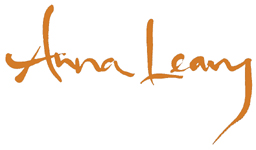|
|
|
title
Mapping the journey
|
|
publication
Nelson Mail
|
|
description
Article by Naomi Mitchell
|
|
date
01:11:2006
|
"...for me Tasman Bay has become a reference point."
Westport artist John Crawford and Nelson artist Anna Leary have teamed-up for a joint exhibiton at Reflections Gallery. Naomi Mitchell talks with the pair about the similarities between their dissimilar works.
West -Coast artist John Crawford draws everyday. It is a habit that started when he was young, and one that has formed the basis for the pottery and drawings exhibited at Reflections Gallery at the World of WearableArt and Collectable Cars Museum this month.
Crawford says his habit has created many scrapbooks of ideas over the years. "They begin simply as idea generating and they have sprung after 30 years of drawing and have their own reality now. They have become part of the existence of the work and studio practice." He uses oil sticks, black gesso and water pased printing ink to create the works. "You get to reveal some areas of the painting and push some away. The idea with drawing is about finding personal reality."
All his drawings reflect spaces at his gallery - his work station, kiln room and bedroom. "The idea of the work is that it searches memory. By using the past, you can begin to map the journey to your current position."
His pottery works are made by a technique called coiling "which is probably the most primitive technique of making pottery". A little bit is added to each work every day, which means each vessel can take more than 20 days to make. The works are fired at 1150deg, a process he completes at his seaside studio at Ngakawau, north of Westport. Crawford has been specialising in the technique for nine years, and finds it a rewarding change from wheel work. "It frees you up from this idea of being concentric and always even; it allows the work to be more expressive. In a way it's more humanised." "It gives the work a sculptural integrity".
Crawford says that in planning the exhibiton with Leary, the pair decided she would use the wall with the view to the water, the rippling water outside the window echoing the colours in her work. He was delighted with the final look of the exhibition and the way all the works reflect the idea of humanity.
In describing the meaning of the exhibiton, Crawford tells a story of a young boy who picks up a seashell from the beach. He takes it home where his older sister tells him to listen to it to hear the sound of the sea. "As you grow up you, realise it isn't the sea you are hearing, it's your body, It is you." "You will see part of yourself in it (the exhibition) if you let it. All New Zealanders are oceanic people in a way."
Leary's work, Twenty-nine days, Tasman Bay, builds on themes she has been developing in her recent works. She creates and paints individual "pods" based on the colours and mood that is reflected in the environment each day. "It is part of an idea, or a series I am working with."
Leary says while installing the 12m long works proved a little challenging (her studio was too small to fit a pattern for the work), she felt fortunate the gallery let her exhibit just one work. "It just happened that the space particularly suited the work in situ with the water underneath." "Scale really interests me, and I am hoping to do some larger scale work."
Leary agrees that while her and Crawfords works are very different to look at, they are strongly based on locations. "For him it is the Coast, and for me Tasman Bay has become a reference point."
Leary says some of the earlier works in her theme have been geometrical formations referencing the underlying geometry of nature and the lunar & Pacific form," but she has "started turning them and breaking out of the structured formation" with the work at Reflections. "It might be where the works are heading."
|
|

